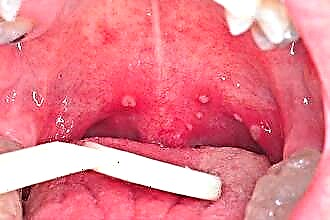The most common cause of ear pain in a child is an inflammatory process. It can occur with both external and middle ear lesions, causing a somewhat different clinical picture and, therefore, therapeutic tactics. In this case, the severity of the pain syndrome can reach such values that children become restless, cry out. In this regard, measures aimed at reducing pain sensations are of paramount importance for improving the situation. It can be both systemic and topical agents.
In case of ear inflammation, topical preparations are the priority.
They are able to provide a targeted effect without causing the development of negative side effects for the whole organism. The therapeutic effect of their use develops much faster than from the action of systemic drugs.
External action means

The use of ear drops and external agents for the treatment of otitis media is due to the presence of an antiseptic, anti-inflammatory, analgesic component in the composition. In addition, some of them contain antibacterial and antifungal ingredients. Many products are prepared on the basis of 70% ethyl alcohol. This is due to the pronounced antiseptic effect of this component, which, when heated, has a pronounced analgesic effect on the outer and middle ear. The most popular alcohol solutions used for otitis media include an alcoholic solution of boric acid, camphor, furacilinic, chloramphenicol alcohol.
The choice of a drug should be carried out by a specialist, since for the purpose of local treatment, it is very important not only to clarify otitis media, but also to determine the integrity of the tympanic membrane. Ear drops, effective and safe for external and catarrhal otitis media, can cause irreparable harm, using them for purulent otitis media that occurs with perforation of the tympanic membrane. A careful approach to use should be in relation to any products containing ethyl alcohol.
The effect of alcohol on the structures of the middle ear causes not only a burning sensation and increased pain, but can also lead to hearing loss.
Indications
External alcoholic solutions are widely used for
- external otitis media;
- as a disinfectant for ear injuries;
- otitis media, if there is no perforation of the tympanic membrane.
Their use can be both in the form of drops and as a means for wiping the surface of the external auditory canal, auricle, or in the form of a cotton turunda dipped in a solution. Despite the fact that these solutions are effective as pain relievers, their appointment for otitis media can only be carried out by a specialist after an otoscopy.
Characteristics of drugs
According to the instructions, furacilin alcohol can be instilled into a child's ear only if there is no perforation of the eardrum.
The same applies to any other alcohol-containing drugs. The antimicrobial agent, furacilin, which is part of the solution, has a depressing effect on many bacteria and fungi, which allows it to be widely used for otitis externa, both in the form of drops and turunda soaked in solution. Furacilin alcohol is instilled into the child's ear three times a day, 1-2 drops, if the integrity of the eardrum is preserved.
The composition of chloramphenicol alcohol includes
- chloramphenicol, which has bacteriostatic activity;
- 70% ethyl alcohol.
Chloramphenicol in the ear of a child in the form of drops is allowed only in rare cases, under the supervision of a doctor, since instilling it can increase the burning sensation.
In addition, it is necessary to use chloramphenicol alcohol with caution, and due to the fact that the antimicrobial agent included in its composition may turn out to be a powerful allergen. Given these facts, the use of this external agent is possible only in children over one year old.
 Camphor alcohol has a pronounced warming effect, so it is most widely used in the form of a solution for compresses. However, physiotherapy is contraindicated in children under the age of five. With otitis media in a child, any thermal procedures are dangerous, since they can aggravate the course of the disease.
Camphor alcohol has a pronounced warming effect, so it is most widely used in the form of a solution for compresses. However, physiotherapy is contraindicated in children under the age of five. With otitis media in a child, any thermal procedures are dangerous, since they can aggravate the course of the disease.
The use of warming compresses is possible only for older children in the recovery phase. In the form of a cotton turunda dipped in a solution, it is allowed to use camphor alcohol at the first signs of otitis media in children. However, given the danger and pronounced warming effect of the drug, such procedures are indicated only in children after 12 years of age.
Camphor alcohol should not be instilled into a child's ear, as this procedure can cause burns.
The broken integrity of the skin is a contraindication for the use of an irritating substance, therefore, this remedy has not spread with otitis externa and injuries of the skin.
Despite the wide popularity of external agents due to their availability, there are currently a sufficient number of modern drugs that are less dangerous and have a more convenient form of release. In addition, many of them are approved for use from the first days after the birth of a child.



